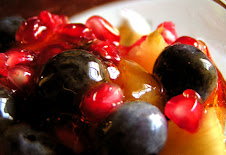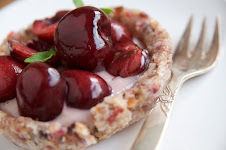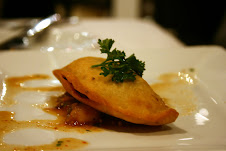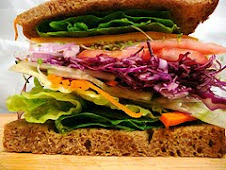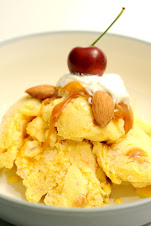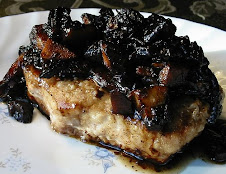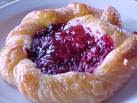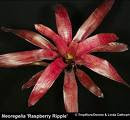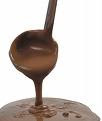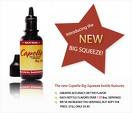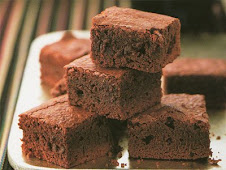 An ice pop is a freezing water based dessert on a stick. It is made by freezing colored, flavored water around a stick. Once the liquid freezes solid, the stick can be used as a handle to hold the ice pop. In Ireland the word "ice pop" is used, but it is regularly called an ice-lolly. In the United Kingdom the word ice-lolly is used for this frozen dessert on a stick and the term ice pop is used for frozen dessert with no stick, usually sold in plastic sleeves eaten by biting off a small corner of the sleeve and sucking on the ice. Ice block is used in Australia and New Zealand, and icy pole in Australia. In the United States and Canada it is almost always called a Popsicle due to the early popularity of the Popsicle product, and the word has become a generalized trade mark to signify any ice pop, irrespective of brand. The ice-lollipop was introduced to the public for the first time at an Oakland ball for firemen in 1922. In 1923, Epperson applied for a copyright for "frozen ice on a stick" called the Epistle ice pop, which he re-named the Popsicle, allegedly at the beginning of his children. This brand is now one of the famous in the United States.
An ice pop is a freezing water based dessert on a stick. It is made by freezing colored, flavored water around a stick. Once the liquid freezes solid, the stick can be used as a handle to hold the ice pop. In Ireland the word "ice pop" is used, but it is regularly called an ice-lolly. In the United Kingdom the word ice-lolly is used for this frozen dessert on a stick and the term ice pop is used for frozen dessert with no stick, usually sold in plastic sleeves eaten by biting off a small corner of the sleeve and sucking on the ice. Ice block is used in Australia and New Zealand, and icy pole in Australia. In the United States and Canada it is almost always called a Popsicle due to the early popularity of the Popsicle product, and the word has become a generalized trade mark to signify any ice pop, irrespective of brand. The ice-lollipop was introduced to the public for the first time at an Oakland ball for firemen in 1922. In 1923, Epperson applied for a copyright for "frozen ice on a stick" called the Epistle ice pop, which he re-named the Popsicle, allegedly at the beginning of his children. This brand is now one of the famous in the United States.Tuesday, November 25, 2008
Ice pop
 An ice pop is a freezing water based dessert on a stick. It is made by freezing colored, flavored water around a stick. Once the liquid freezes solid, the stick can be used as a handle to hold the ice pop. In Ireland the word "ice pop" is used, but it is regularly called an ice-lolly. In the United Kingdom the word ice-lolly is used for this frozen dessert on a stick and the term ice pop is used for frozen dessert with no stick, usually sold in plastic sleeves eaten by biting off a small corner of the sleeve and sucking on the ice. Ice block is used in Australia and New Zealand, and icy pole in Australia. In the United States and Canada it is almost always called a Popsicle due to the early popularity of the Popsicle product, and the word has become a generalized trade mark to signify any ice pop, irrespective of brand. The ice-lollipop was introduced to the public for the first time at an Oakland ball for firemen in 1922. In 1923, Epperson applied for a copyright for "frozen ice on a stick" called the Epistle ice pop, which he re-named the Popsicle, allegedly at the beginning of his children. This brand is now one of the famous in the United States.
An ice pop is a freezing water based dessert on a stick. It is made by freezing colored, flavored water around a stick. Once the liquid freezes solid, the stick can be used as a handle to hold the ice pop. In Ireland the word "ice pop" is used, but it is regularly called an ice-lolly. In the United Kingdom the word ice-lolly is used for this frozen dessert on a stick and the term ice pop is used for frozen dessert with no stick, usually sold in plastic sleeves eaten by biting off a small corner of the sleeve and sucking on the ice. Ice block is used in Australia and New Zealand, and icy pole in Australia. In the United States and Canada it is almost always called a Popsicle due to the early popularity of the Popsicle product, and the word has become a generalized trade mark to signify any ice pop, irrespective of brand. The ice-lollipop was introduced to the public for the first time at an Oakland ball for firemen in 1922. In 1923, Epperson applied for a copyright for "frozen ice on a stick" called the Epistle ice pop, which he re-named the Popsicle, allegedly at the beginning of his children. This brand is now one of the famous in the United States.Wednesday, November 12, 2008
Freshwater
 Freshwater is a word that refers to bodies of water such as ponds, lakes, rivers and streams containing low concentrations of dissolved salts and other total dissolved solids. In other words, the word excludes salt water and brackish water.Freshwater is an important renewable resource, essential for the endurance of most terrestrial organisms, and is required by humans for drinking and farming, among several uses. The UN estimates that about 18 percent of the world's populace lacks access to safe drinking water. Freshwater can also be the output of desalinated seawater.
Freshwater is a word that refers to bodies of water such as ponds, lakes, rivers and streams containing low concentrations of dissolved salts and other total dissolved solids. In other words, the word excludes salt water and brackish water.Freshwater is an important renewable resource, essential for the endurance of most terrestrial organisms, and is required by humans for drinking and farming, among several uses. The UN estimates that about 18 percent of the world's populace lacks access to safe drinking water. Freshwater can also be the output of desalinated seawater.Freshwater creates a hypotonic environment for aquatic organisms. This is problematic for little organisms, whose cell membranes will burst if excess water is not excreted. Some protests accomplish these using contractile vacuoles, even as freshwater fish excrete overload water via the kidney. Although most aquatic organisms have a limited ability to regulate their osmotic balance and therefore can only live within a narrow range of salinity, fish have the ability to migrate between freshwater and saline water bodies. During these migrations they undergo changes to adapt to the surroundings of the changed salinities; these processes are hormonally controlled. The eel uses the hormone prolactin, while in salmon the hormone cortical plays a key position during this practice
Thursday, November 6, 2008
Nutritional value of non-diet soft drinks
 The soft drinks obtained nearly all of their food power in the form of refined cane sugar or hard skin syrup. Today in the United States high-fructose corn syrup (HFCS) is used nearly exclusively as a sweetener because of its lower cost. However, HFCS has been criticized as having a number of harmful effects on human health, such as promoting diabetes, hyperactivity, hypertension, and a host of other problems. Though subjective evidence has been presented to support such claims, it is well known that the human body breaks sucrose down into glucose and fructose before it is absorbed by the bowels. Simple sugars such as fructose are converted into the same intermediates as in glucose metabolism.. However, metabolism of fructose is extremely rapid and is initiated by fructokinase. Fructokinase activity is not keeping pace by metabolism or hormones and proceeds rapidly after intake of fructose. While the intermediates of fructose metabolism are similar to those of glucose, the rates of formation are excessive. This fact promotes hepatic fatty acid and triglyceride synthesis, leading to accumulation of fat throughout the body. Increased blood lipid levels also seem to follow fructose ingestion over time. While the USDA recommended daily allotment (RDA) of added sugars is 10 teaspoons for a 2,000-calorie diet, many soft drinks contain more than this amount. Unless fortified, they also contain little to no vitamins, minerals, fiber, protein, or other necessary nutrients. Many soft drinks enclose food additives such as food coloring, artificial flavoring, emulsifiers, and preservatives.
The soft drinks obtained nearly all of their food power in the form of refined cane sugar or hard skin syrup. Today in the United States high-fructose corn syrup (HFCS) is used nearly exclusively as a sweetener because of its lower cost. However, HFCS has been criticized as having a number of harmful effects on human health, such as promoting diabetes, hyperactivity, hypertension, and a host of other problems. Though subjective evidence has been presented to support such claims, it is well known that the human body breaks sucrose down into glucose and fructose before it is absorbed by the bowels. Simple sugars such as fructose are converted into the same intermediates as in glucose metabolism.. However, metabolism of fructose is extremely rapid and is initiated by fructokinase. Fructokinase activity is not keeping pace by metabolism or hormones and proceeds rapidly after intake of fructose. While the intermediates of fructose metabolism are similar to those of glucose, the rates of formation are excessive. This fact promotes hepatic fatty acid and triglyceride synthesis, leading to accumulation of fat throughout the body. Increased blood lipid levels also seem to follow fructose ingestion over time. While the USDA recommended daily allotment (RDA) of added sugars is 10 teaspoons for a 2,000-calorie diet, many soft drinks contain more than this amount. Unless fortified, they also contain little to no vitamins, minerals, fiber, protein, or other necessary nutrients. Many soft drinks enclose food additives such as food coloring, artificial flavoring, emulsifiers, and preservatives.
Subscribe to:
Posts (Atom)



